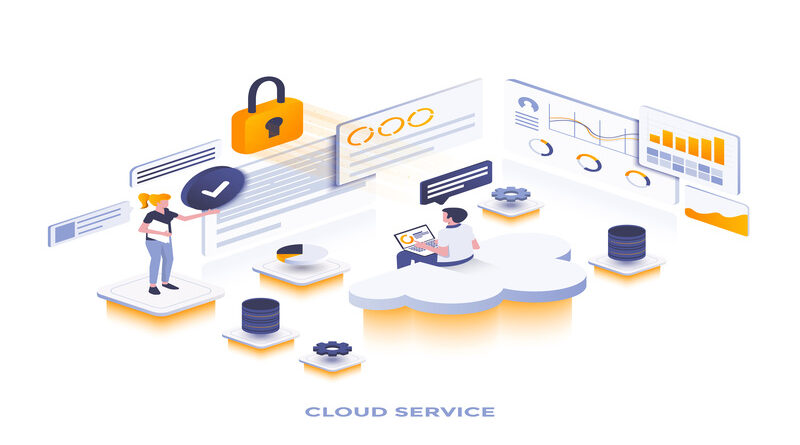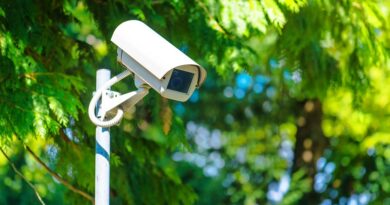All You Need to Know about Cloud-Based Biometric Identification
Just a decade ago, cloud computing was only an emerging field of computer networks, but now it has become a new normal for most of the people. In the past 5-6 years, cloud computing has become one of the fundamental bases of growth and productivity for the business. But along with affecting the industry and improving it in many ways, cloud computing has also enhanced the use and availability of technology for ordinary people as well. But one of the main concerns regarding cloud computing has been secured, and that’s why, in this blog post, we are going to talk about the first line of defense on a cloud computing platform, i.e., cloud-based biometric identification.
Hacked password and data intrusion are the two most common types of security risks on the cloud. Even after the deployment of various security layers, the number of hacked passwords and data intrusion cases doesn’t seem to stop. If someone hacks your password, then they will get full control over your resources. But cloud-based biometric identification is proving to one of the best ways to avoid these types of hacks and intrusion on the cloud platform.
One of the best ways to deal with this type of issue on cloud is to bring the biometric technology to the cloud. Cloud-based biometric identification acts as the first line of defense against all types of security risks related to hacked passwords and data intrusion. In the cloud-based biometric identification, attributes that are unique for each person are used like facial recognition and fingerprint recognition. Facial recognition for accessing your cloud-based application of data is still minimal, and most of the people use the fingerprint-based biometric identification.
To access your cloud data, you will have first to enter you credential and then go through fingerprint scanning on the cloud system. There are various advantages of using a cloud-based biometric solution, and that’s why it is being used rapidly. You will be surprised to know that cloud-based biometric identification is almost impossible to breach because it is based on a highly advanced identification process that can never be copied. If you are using your fingerprint for accessing your cloud-based data, then there is no way one can copy that because fingerprints are unique to every individual.
If you are going to use a cloud-based biometric identification, then the cloud provider will enroll you into the biometric system that is provided by the cloud provider himself. You might be thinking that you will give a single fingerprint to the cloud provider, and that will be it, but that’s now the way how cloud-based biometric identification works on the cloud. The cloud provider will ask you to give different biometric fingerprints during the enrollment process. All the biometric fingerprints given by you will be stored in the form of templates.
Now when you access the cloud-based application or data, your fingerprint will be matched with the fingerprint data stored by the cloud provider in the form of templates. If the fingerprint given by you will match with the templates, then you will be given access to the cloud system, and if not, then your access will be denied. This makes sure that only authorized people have access to the cloud system. It doesn’t matter how hard the hackers and online criminals try; they will never be able to access your data and application stored on the cloud. So with cloud-based biometric identification, you will not have to worry even if criminals get their hands on your login credentials.
For enhancing the safety and security of your cloud-based data and application, cloud providers have also started using a multi-finger security model. The multi-finger security model makes your cloud platform ultra-secure, and the chances of illegal or unauthorized access are nullified. In the multi-finger security model, the cloud user is required to register with at least three finger templates, and one digit is assigned to each finger. The fingerprint images, along with the assigned digits and mapping, are encrypted by the cloud provider to increase the level of security on the cloud further. The encryption of all this data is done through an advanced encryption module, and then it is stored at the cloud provider’s end. Because of the use of three or more than three inputs, this type of cloud-based biometric identification is considered almost impossible to breach.
So, cloud computing comes with various security layers that make it secure from different types of cyberattacks. Still, cloud-based biometric identification is undoubtedly one of the most advanced and reliable security layers, which is almost impossible for breach. In the future, we will see more improvements in this field.
Author Bio
Jeff Morgan is a writer at NetworksGrid with several years of experience in the IT industry. She loves writing and exploring the world of technology while making the digital platform a more informative platform. Technology is what she eats and drink, and she has a firm grasp on topics like managed IT service and managed NOC service.











